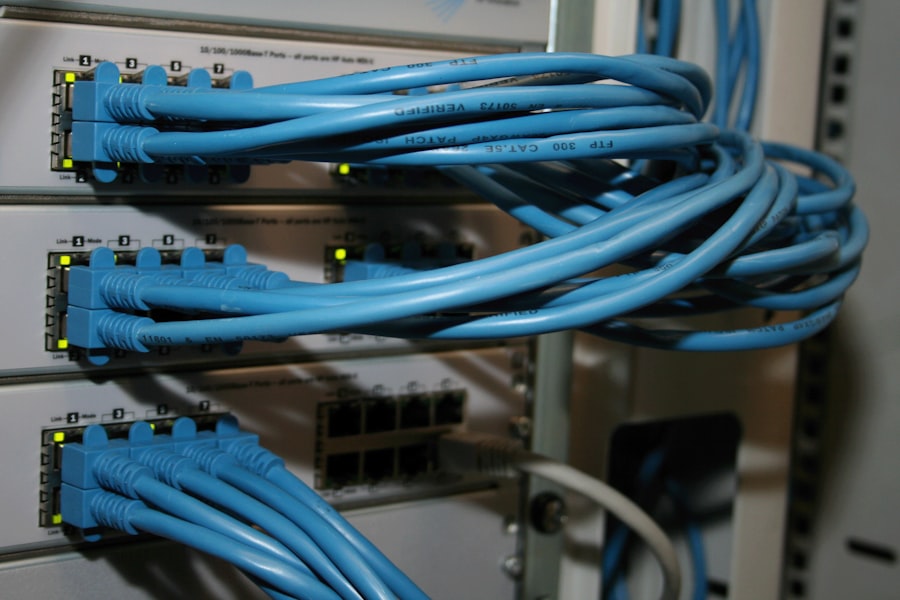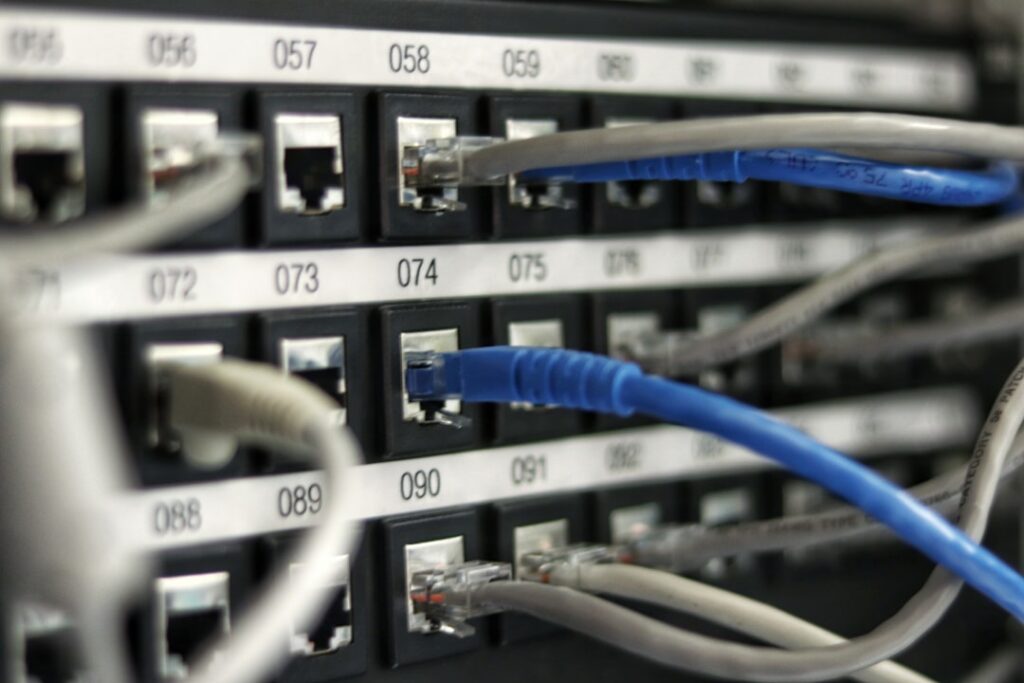As I delve into the realm of cybersecurity, one concept that consistently stands out is Network Access Control, commonly referred to as NAThis technology serves as a critical gatekeeper for network security, ensuring that only authorized devices and users can access sensitive information and resources. In an age where cyber threats are increasingly sophisticated, NAC has emerged as a vital component in safeguarding organizational assets. By establishing a framework that governs who can connect to a network and under what conditions, NAC plays a pivotal role in maintaining the integrity and confidentiality of data.
The evolution of NAC has been driven by the growing complexity of network environments. With the proliferation of mobile devices, cloud computing, and the Internet of Things (IoT), traditional perimeter-based security measures have become insufficient. I find it fascinating how NAC adapts to these changes, providing a more granular approach to security that focuses on user identity and device compliance.
This adaptability is essential in today’s dynamic landscape, where threats can emerge from both internal and external sources.
Key Takeaways
- Network Access Control (NAC) is a security solution that regulates and manages access to a network based on a set of defined security policies.
- NAC is crucial in modern security as it helps organizations enforce security policies, prevent unauthorized access, and mitigate security risks.
- NAC works by authenticating and authorizing devices and users before granting access to the network, and continuously monitoring and enforcing security policies.
- Implementing NAC brings benefits such as improved network visibility, enhanced security posture, compliance enforcement, and reduced security incidents.
- Challenges and limitations of NAC include complexity of implementation, potential impact on user experience, and the need for continuous updates and maintenance.
Importance of NAC in Modern Security
The importance of NAC in modern security cannot be overstated. As organizations increasingly rely on digital infrastructure, the potential for unauthorized access and data breaches has escalated dramatically. I recognize that NAC serves as a frontline defense mechanism, helping to mitigate these risks by enforcing policies that dictate who can access what within a network.
This capability is particularly crucial in environments where sensitive data is handled, such as healthcare, finance, and government sectors. Moreover, NAC enhances visibility into network activity. By monitoring devices that attempt to connect to the network, I can gain insights into potential vulnerabilities and unauthorized access attempts.
This level of visibility is invaluable for proactive threat management. It allows organizations to respond swiftly to incidents and adjust their security posture accordingly. In a world where cyber threats are constantly evolving, having a robust NAC solution in place is essential for maintaining a secure environment.
How NAC Works

Understanding how NAC works is fundamental to appreciating its role in network security. At its core, NAC operates on a set of policies that determine the conditions under which devices can access the network. When a device attempts to connect, NAC assesses its compliance with these policies.
This assessment can include checking for up-to-date antivirus software, operating system patches, and other security configurations. If a device meets the established criteria, it is granted access; if not, it may be quarantined or denied entry altogether. I find it intriguing that NAC solutions often integrate with other security technologies, such as firewalls and intrusion detection systems.
This integration allows for a more comprehensive approach to security management. For instance, if a device is flagged as non-compliant, NAC can automatically trigger additional security measures, such as alerting IT personnel or isolating the device from critical resources. This automated response not only enhances security but also streamlines incident response processes.
Benefits of Implementing NAC
Implementing NAC offers numerous benefits that extend beyond mere access control. One of the most significant advantages is improved compliance with regulatory requirements. Many industries are subject to strict regulations regarding data protection and privacy.
By enforcing access policies through NAC, organizations can demonstrate their commitment to compliance and reduce the risk of costly penalties associated with data breaches. Additionally, I appreciate how NAC contributes to overall network performance. By controlling which devices can connect and ensuring they meet specific security standards, organizations can reduce the likelihood of malware infections and other threats that could compromise network integrity.
This proactive approach not only protects sensitive data but also enhances the user experience by minimizing disruptions caused by security incidents.
Challenges and Limitations of NAC
Despite its many advantages, implementing NAC is not without challenges. One significant hurdle I often encounter is the complexity of deployment. Integrating NAC into existing network infrastructures can be a daunting task, particularly for organizations with legacy systems or diverse device types.
The need for thorough planning and testing cannot be overstated; without careful consideration, organizations may face disruptions or compatibility issues during implementation. Another limitation I recognize is the potential for user resistance. Employees may view NAC as an obstacle to their productivity, especially if they encounter delays or restrictions when accessing resources.
To address this challenge, it is crucial for organizations to communicate the benefits of NAC clearly and provide adequate training to users. By fostering an understanding of how NAC enhances security without compromising efficiency, organizations can mitigate resistance and encourage compliance.
Best Practices for Implementing NAC

To maximize the effectiveness of NAC, I believe organizations should adhere to several best practices during implementation. First and foremost, conducting a thorough assessment of existing network infrastructure is essential. This assessment should include identifying all devices that connect to the network and understanding their security postures.
By gaining a comprehensive view of the environment, organizations can tailor their NAC policies to address specific vulnerabilities. Another best practice involves establishing clear access policies based on user roles and device types. I find that creating granular policies allows for more precise control over who can access what within the network.
Additionally, regular reviews and updates of these policies are necessary to adapt to changing threats and organizational needs. By maintaining an agile approach to policy management, organizations can ensure that their NAC solutions remain effective over time.
NAC in the Age of Remote Work
The rise of remote work has introduced new challenges for network security, making NAC even more relevant today. As employees connect from various locations and devices, ensuring secure access becomes paramount. I recognize that traditional perimeter-based security models are no longer sufficient; instead, organizations must adopt a more flexible approach that accommodates remote access while maintaining robust security measures.
In this context, NAC plays a crucial role in verifying the security posture of remote devices before granting access to corporate resources. By implementing endpoint compliance checks and enforcing policies tailored for remote work scenarios, organizations can protect sensitive data while enabling employees to work efficiently from anywhere. This balance between security and accessibility is vital in today’s hybrid work environment.
Future Trends in NAC
Looking ahead, I am excited about the future trends shaping the landscape of Network Access Control. One notable trend is the increasing integration of artificial intelligence (AI) and machine learning (ML) into NAC solutions. These technologies have the potential to enhance threat detection capabilities by analyzing patterns in network behavior and identifying anomalies in real time.
As cyber threats become more sophisticated, leveraging AI-driven insights will be essential for staying ahead of potential attacks. Additionally, I foresee a growing emphasis on zero-trust architectures within NAC frameworks. The zero-trust model operates on the principle that no user or device should be trusted by default, regardless of whether they are inside or outside the network perimeter.
By adopting this mindset, organizations can implement more stringent access controls and continuously verify user identities and device compliance. This shift towards zero trust will likely redefine how organizations approach network security in the coming years. In conclusion, Network Access Control is an indispensable component of modern cybersecurity strategies.
Its ability to enforce access policies, enhance visibility into network activity, and improve compliance makes it a vital tool for organizations navigating today’s complex digital landscape. While challenges exist in implementing NAC effectively, adhering to best practices and embracing emerging trends will enable organizations to strengthen their security postures in an ever-evolving threat environment. As I reflect on the future of NAC, I am optimistic about its potential to adapt and evolve alongside technological advancements and changing work dynamics.
In the ever-evolving landscape of cybersecurity, Network Access Control (NAC) plays a pivotal role in safeguarding modern networks by ensuring that only authorized devices can access network resources. A related article that delves into the intricacies of server migration, which is a critical aspect of maintaining secure and efficient network operations, can be found on The Sheryar’s website. This article, titled “CyberPanel to CyberPanel: Migrating to Another Server,” provides valuable insights into the process of migrating servers while maintaining security protocols. For more information, you can read the full article by following this link.
FAQs
What is Network Access Control (NAC)?
Network Access Control (NAC) is a security solution that allows organizations to control who can access their network and what resources they can access. It helps to ensure that only authorized users and devices can connect to the network.
How does Network Access Control (NAC) work?
NAC works by authenticating and authorizing devices and users before allowing them to access the network. It can enforce security policies, check for compliance with security standards, and quarantine devices that do not meet the requirements.
What are the benefits of using Network Access Control (NAC)?
Some of the benefits of using NAC include improved network security, better visibility and control over network access, compliance with security policies and regulations, and protection against unauthorized access and potential threats.
What role does Network Access Control (NAC) play in modern security?
In modern security, NAC plays a crucial role in protecting networks from unauthorized access, securing sensitive data, and ensuring compliance with security standards and regulations. It helps organizations to mitigate security risks and prevent potential security breaches.
